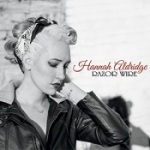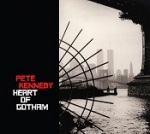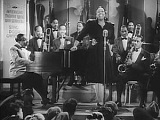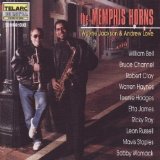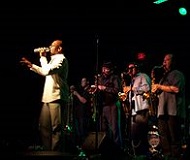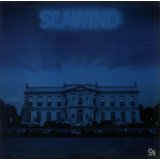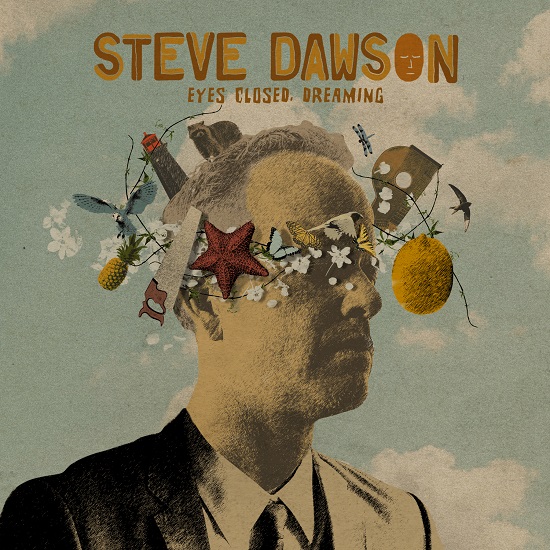
There are a couple of things you can expect from any Steve Dawson album: it’s going to be beautifully arranged and played, and definitely unpredictable. ‘Eyes Closed, Dreaming’ doesn’t disappoint on either count. It’s the third of Steve’s pandemic albums, with contributions pieced together remotely, a logical and necessary extension during lockdown of the studio practice of recording parts separately. It’s a tribute to Steve and all the superb musicians involved that the whole album feels like it was recorded by musicians playing in the same room. The arrangements on the album are trademark Steve Dawson with lots of layers of guitars and a whole raft of instruments that are unusual in any context but particularly in Americana arrangements. As ever, he makes it work, creating soundscapes that sound uncluttered while using multiple guitars, bass, drums, keyboards (including Moog and mellotron), strings, horns and even marxophone, vibraphone and pump organ.
Steve enjoys reworking other people’s songs with his own spin and there are four of those on the album, ‘Long Time to Get Old’ and ‘Guess Things Happen That Way’ get the swampy Southern rock treatment, while ‘Small Town Talk’ with its horns, nods in the direction of Muscle Shoals and ‘Let Him Go on Mama’ is a solo piece with Weissenborn backing that closes the album. There are also a couple of reworkings of traditional songs. These are all great versions that give Steve a chance to have a bit of fun and show his instrumental versatility, but the backbone of the album is the four songs co-written with Matt Patershuk.
Matt’s a hugely creative and poetic songwriter and the four co-writes are a good representation of the breadth of topics he likes to cover, from the nostalgic ‘Polaroid’, harking back to a pre-digital era to the wonders of nature expressed in ‘The Owl’. ‘Hemingway’ references, well, Ernest Hemingway, while ‘A Gift’ is about taking care of your family and showing pride in workmanship. Like all of Matt’s songs, they’re thought-provoking and occasionally spring a few surprises. As good as the rest of the album is, these four songs shine brightly.
Steve Dawson’s one of the many that accepted the pandemic lemons and made artisan lemonade by learning a completely new way of working and using the enforced break to create three superb albums. ‘Eyes Closed, Dreaming’ covers a range of styles from folk ballads through Americana to ragtime and Hawaiian music and Steve sounds convincing in all of them with his range of instruments, particularly the Weissenborn. And I almost forgot to mention that he has a great laid-back and soulful vocal style. You won’t get bored listening to this album.
‘’Eyes Closed, Dreaming’ is released on Black Hen Music (BHCD0098) on Friday March 24th.
Here’s a live studio video for ‘Small Town Talk’:
It’s not so long since this feature would have been ‘Top Five Singles’, but the concept of a single seems almost irrelevant outside the Radio 1 bubble and my friends in real radio call them ‘lead tracks’ now, so I’m picking my own lead tracks from some of the albums I’ve reviewed this year. These are five songs that grabbed me at the first listen and left me either elated or emotionally drained. If you don’t listen to anything else I’ve recommended, give these a spin; they all come from good or great albums, but they’re standout examples of superb songwriting, performance and production. They aren’t in any particular order, so where do we start?
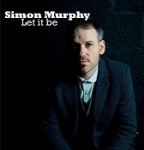 “Not in My Name” – Simon Murphy
“Not in My Name” – Simon Murphy
Simon Murphy’s debut album, “Let it Be”, was released in September of this year and it’s packed with songs that are well-crafted musically and lyrically. “Not in My Name” stands out as one of the simpler songs on the album, but it packs an emotional punch made even more potent by the events of the last few weeks. It could easily be a very angry song, but Simon’s delivery has a much more world-weary feel, hinting at fatigue rather than anger. This is a song that could easily be an anthem but works so well because it doesn’t go down that route.
This is another song from a debut album. Hannah is from Muscle Shoals, Alabama and her stunning debut album, “Razor Wire” is packed with autobiographical, emotive and often harrowing songs; “Parchman” is an exception. It was inspired by a TV documentary about a woman on death row in Mississippi State Penitentiary (or Parchman Farm) awaiting execution for the murder of her abusive husband. For the first time, her life has a structure and she knows how it will end. I won’t pretend it’s an easy listen, but it’s a superb song. When Hannah played it live at Green Note in July, she told the audience the back story and went on to say that she would probably have taken the same way out of the situation; how many of us would say exactly the same?
Pete’s much-anticipated masterpiece “Heart of Gotham” was released this year; the album took about ten years to make as Pete worked on it between various other projects, including albums by The Kennedys, his own guitar album “Tone, Twang and Taste” and work with Nanci Griffith’s Blue Moon Orchestra. The entire album is a fabulous piece of work, and “Union Square”, as the opening song, is a perfect example of Pete’s work. If you can imagine The Byrds fronted by Springsteen, then you probably have a good idea how this sounds. Pete’s crystal-clean guitars contrast beautifully with his rasping vocal delivery as he sings a song packed with literary and historical references to his favourite city. Although the song has an immediate musical impact, each subsequent listen will reveal a lyric that passed you by originally; I can listen to this again and again.
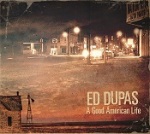 “Flag” – Ed Dupas
“Flag” – Ed Dupas
From the album “A Good American Life”, this is a classic example of a turnaround song (I’m going to admit here that the final two songs will both pull on your heartstrings if you have a heart). Musically, “Flag” is pretty straightforward and the lyrics appear to tell the story of an idyllic American town overlooked by the flag and a hint of patriotism with the refrain ‘red, white and blue till their dying day’. The sting is in the final verse; as soon as Ed sings about the flag being folded, the tone changes and you know that it’s about a dead serviceman and a bereaved family. It still brings a tear to my eye every time I hear it.
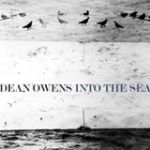 “Sally’s Song (I Dreamed of Michael Marra) – Dean Owens
“Sally’s Song (I Dreamed of Michael Marra) – Dean Owens
Dean’s latest album, “Into the Sea”, is an intensely personal and nostalgic piece of work, looking back to more innocent times and plotting the erratic courses (sometimes happy, sometimes tragic) of old school friends. “Sally’s Song”, over a Pachelbel’s Canon-style backing, uses the demolition of an old housing scheme as a trigger for memories of old friends doing well and badly. It’s a particularly Scottish song, making references to Billy Mackenzie and Michael Marra and it pushes all of my buttons, every time.
I’ve picked out individual tracks from five albums, but, honestly, you should have a listen to all five albums as well.
 Here’s something that we really have to share with you. It’s an album from 2014 by Hannah Aldridge called “Razor Wire” and the title gives more than a hint at the lyrical content; it’s painfully honest and uncompromising, which isn’t so surprising when you discover that her musical hero is Jackson Browne. She describes her music as ‘dark Americana’, which is probably right on the money with musical stylings straddling the country and country/rock genres providing a platform for Hannah’s strong yet vulnerable vocals and confessional lyrics.
Here’s something that we really have to share with you. It’s an album from 2014 by Hannah Aldridge called “Razor Wire” and the title gives more than a hint at the lyrical content; it’s painfully honest and uncompromising, which isn’t so surprising when you discover that her musical hero is Jackson Browne. She describes her music as ‘dark Americana’, which is probably right on the money with musical stylings straddling the country and country/rock genres providing a platform for Hannah’s strong yet vulnerable vocals and confessional lyrics.
The eleven songs on the album, plus a bonus acoustic version of the title song are shot through with melancholy and a willingness to shine a torch into the murky basement of a life that hasn’t always followed a straightforward path. There are references to addiction (“Lie like You Love Me”), taking control of your destiny (“Howlin’ Bones”) and wrecked relationships (“Razor Wire”) although there’s also the more introspective, nostalgic feel of “Black and White”. Despite using so much biographical detail, the person delivering the songs isn’t quite the real Hannah Aldridge, she’s a character who shares the same past but has a different, harder attitude to its reality and to risky behaviour.
This is an album that transcends genres; it’s rooted in Americana, and the Muscle Shoals tradition, but the quality and the delivery of the deeply personal songs create a piece that’s essential listening for anyone remotely interested in high quality songwriting.
You can see Hannah in these UK venues in July:
Saturday 4 Easton, Suffolk Maverick Festival 2015
Sunday 5 Birmingham Kitchen Garden Café
Tuesday 7 Nottingham The Maze with guest Don Gallardo
Thursday 9 Plymouth The B-Bar with Don Gallardo
Friday 10 Bristol The Golden Lion with Don Gallardo & The Rosellys
Sunday 12 Winchester The Railway
Monday 13 Brighton The Greys
Tuesday 14 London Green Note co-headline with Don Gallardo
We’ll be reporting back from the final show of the tour at Green Note in Camden. Until then, have a look at this:
Our next contributor plays saxophone with Southside Johnny and The Asbury Jukes but also released a strikingly good album this year as part of the New York Horns which is one of Allan’s albums of the year. When we asked him for a High Fives piece, here’s what he came up with. We think you’ll like this.
5 Horn Sections That Changed My Life
As a saxophone player, one of my absolute favorite ways to make music is with other horn players. Give me a trumpet or two, a couple of other saxophone players and a trombone to add some love, and you’ve got a recipe for a whole lotta fun. If the rhythm section is the meat and potatoes, and the vocalist is dessert, then the horn section is the salt. We bring out all the other flavors and make everything oh so much sweeter.
In thinking about the subject matter for this best-of list, it quickly dawned on me that I had MANY more than five examples that I could draw upon to make my point. So many that I almost gave up! After some careful consideration though, here’s five of the horn sections that have changed my life through their contributions to the music:
THE swingin-est band in the history of jazz. Count Basie’s band emerged in the 1930’s in Kansas City, and became the de facto definition of foot-stomping swing with their penchant for shouting blues, riffing head arrangements, and an infectious groove that just made you want to dance. The jazz traditions of “riffing” and “head arrangements”, while not originating with the Basie band, were certainly developed and forwarded onward by the band. Many of the riffs, licks and phrases that you will hear modern horn sections play can trace some or part of their lineage back to the Basie band. Check out “The Atomic Mr. Basie” (1957) and “Count Basie Swings, Joe Williams Sings” (1956). Two of my all time favorite Basie albums.
James Brown redefined popular music. He also redefined the role of the horn section in popular music. Prior to his influence, horns would generally have a more melodic role – playing melodies and generally being in a “lead” role. The late swing and early jump blues bands often were led by horn players and under the vocals the horns played a large supporting role, remaining a mostly harmonic underpinning. James changed all that. The horn section under James Brown became another rhythmic instrument, driving and propelling the groove. With snapping rhythmic pulses and repeating motifs, the horn section was another texture in the rhythm section, adding propulsion and rhythmic intensity. Check out “Mother Popcorn”, “Super Bad”, “Soul Power” and “Cold Sweat” for classic examples. The JB Horns (Maceo Parker, Fred Wesley, Alfred “Pee Wee” Ellis) also were a fixture of P-Funk and Bootsie’s (Collins) Rubber Band, as the Horny Horns.
Growing up in North Carolina, in the southern United States, it was inevitable that I was exposed to the music coming out of Memphis, Tennessee and especially STAX Records. Wayne Jackson and Andrew Love, aka the Memphis Horns, are one of the most recorded horn sections in history. If you’ve heard “Dock Of The Bay”, “Soul Man”, “Hold On I’m Comin’”, “Suspicious Minds”, “Sweet Caroline”, “Takin’ It To The Streets”, “Let’s Stay Together”, “Born Under A Bad Sign”, “Knock On Wood” (and countless other hits), then you’ve heard the Memphis Horns. They appeared on virtually every STAX recording, backing Otis Redding, Sam & Dave, Eddie Floyd, Carla & Rufus Thomas and an endless list of others. Not only were they a staple of the Memphis scene but could also be found as part of the Muscle Shoals scene, and on recordings with Aretha Franklin and Wilson Pickett.
No modern horn player that plays funk, soul or R&B hasn’t heard of or spent time studying TOP. Bursting onto the scene in Oakland, CA in 1968, Tower saw its peak success from 1973 to 1974. The band continues to tour extensively to this day, playing hundreds of shows every year across the world. The horn section has been featured on countless recordings by artists as diverse as Little Feat, Graham Central Station, The Monkees, Santana, Elton John, John Lee Hooker, Rufus, Rod Stewart, Huey Lewis and the News, and Aerosmith and has come to define a punchy, modern and funky style of writing and performing for horns. Check out “Tower of Power” (1973) and “Back to Oakland” (1974) for the definitive TOP experience.
While not a horn section unto himself, Jerry Hey has probably written more horn arrangements for hit songs and albums than anyone else in the business. As part of the Seawind Horns, Jerry was brought to the attention of Quincy Jones. That relationship led to Jerry’s writing for some of the biggest names in the industry. His credits as an arranger include albums from Michael Jackson, Brothers Johnson, Donna Summer, Rufus, George Benson, Patti Austin, James Ingram, Frank Sinatra, Barbra Streisand, Earth, Wind and Fire , Al Jarreau, Chaka Khan, and the list goes on… Two of my favorite albums that feature Jerry’s writing (and the Jerry Hey Horns) extensively are Al Jarreau’s “Jarreau” and “High Crime” (Check out “Imagination”!) and likely my all time favorite Jerry Hey arrangement (and performance) is from Michael Jackson’s “Workin’ Day And Night” (“Off The Wall”).
I could go on and on… there are so many great horn sections, players and writers out there, making incredible music. Hopefully this list will give you some food for thought and a good place to begin to explore the horn section legacy. Enjoy!


